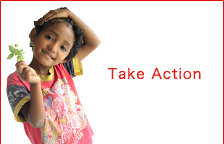SHARE
Services for the Health in Asian & African Regions (SHARE) = SHARE is a citizen sector organization (NGO) that engages in international cooperation mainly through providing health service.
HOME > Library > AIDS > The Current Situation
The Current Situation

Beginning in 1981 when the first case of HIV was recorded, HIV has become a worldwide pandemic and global health concern. According to reports published by UNAIDS and the World Health Organization (WHO), at the end of the year 2004 there were approximately 39.4 million people (between 35.9 and 44.3 million) living with HIV around the world. This number is only increasing, as the year 2004 alone brought a high of 4.9 million newly HIV infected people and 3.1 million deaths from AIDS. Out of the 39.4 million people infected with HIV, about two-thirds, or 25.4 million people, reside in sub-Saharan Africa. The second highest infection rate is that of Southeast Asia, with about 7.1 million HIV-positive cases, followed by Latin America with 1.7 million cases, and finally Central and East Asia. Although the spread of HIV is a global phenomenon, infection rates in Central and East Asia as well as in Eastern European countries have risen quite dramatically over the past 2 years.
In addition, over half of the world's HIV-positive community consists of women and children, and this number has risen substantially over the past few years as well. The high number of women is most likely due to the lower social status of women in many countries around the world, as their lower status stunts their ability to receive education and find employment. Therefore, UNAIDS emphasizes the need to decrease female infection rates in order to slow the spread of the HIV virus as a whole.
Alongside the dramatic increase of HIV cases around the world, there has been an increase in efforts as well as spending pertaining to HIV prevention and treatment. It has become much easier for HIV-positive patients to gain access to treatment, and information about the disease as well as prevention techniques has become much more accessible. However, even in areas where treatment is readily available, many are unable to receive treatment due to class differences and regional differentials, decreasing the number of HIV-positive patients who are treated for their sickness. In the year 2004, for example, a mere 44 thousand people were treated for HIV, and almost none of these people were living in sub-Saharan Africa, where treatment is needed most. 9 out of 10 people who need treatment in order to survive reside in this part of Africa, but only a small percentage of these people are able to receive treatment every year--a sign that HIV/AIDS related deaths are still surpassing the number of HIV/AIDS cases being treated. This pinpoints the weaknesses in current HIV/AIDS treatment efforts, and emphasizes the fact that every region must redouble its efforts to ensure the most people possible are getting treated for HIV.
*UNAIDS HIV/AIDS Update (2004)


